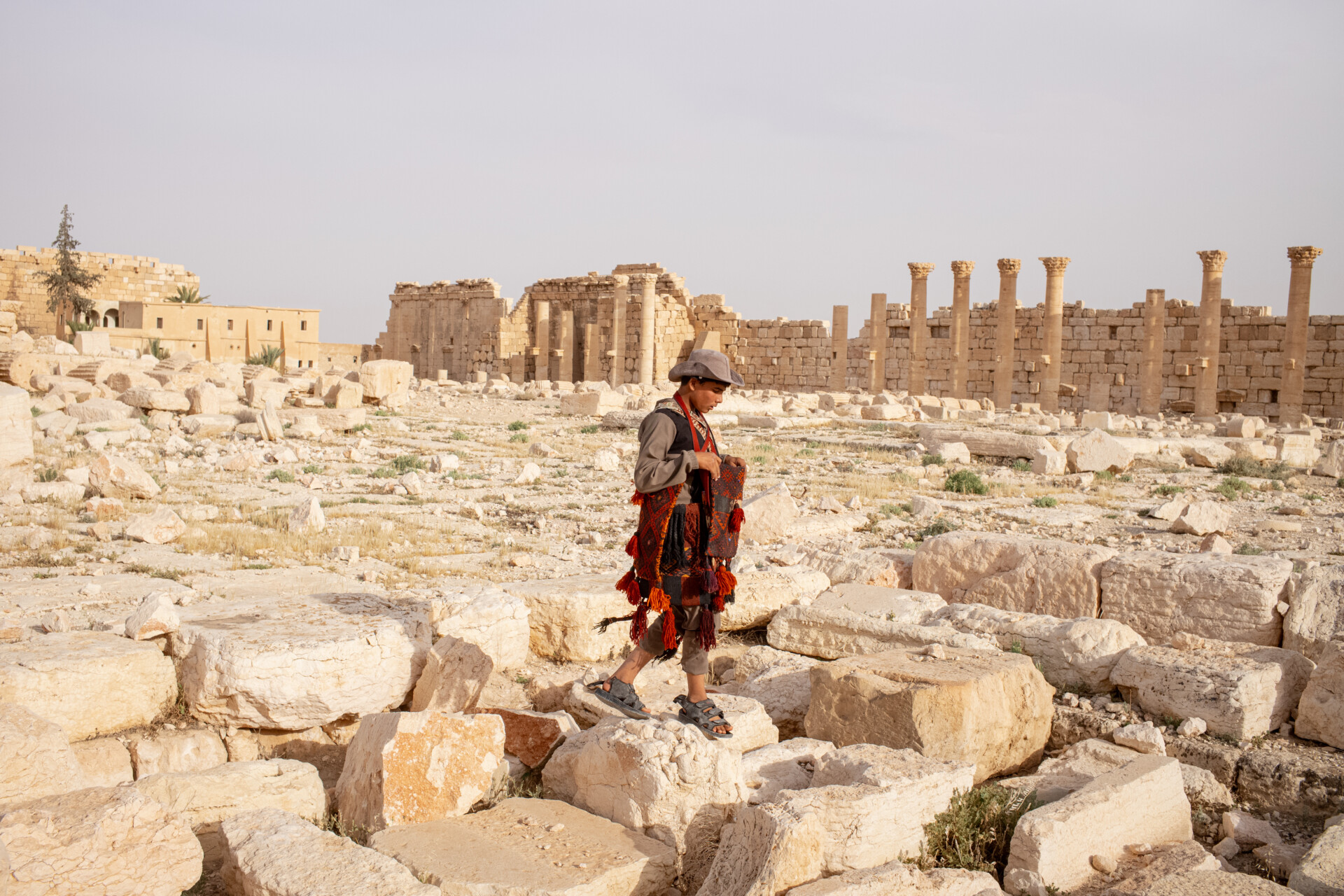A faint silhouette in the golden haze of the Badiya, Syria’s central desert, Palmyra emerges, her beauty barely visible through the sandstorm that blurs the horizon. It is only when one draws near that the battered remains of the city begin to materialize. First, the lonely Qalat ibn Maan fortress, standing vigil over a ravaged plain, then the crumbling colonnades of the ancient city and the sun-scorched buildings of a modern town, emptied of its people.
Once a vibrant cultural crossroads and global tourist draw, Palmyra now survives only in fragments. Its streets, pocked with bullet holes and shell craters, tell a story of relentless war. Since 2011, it has been a battleground for almost every faction in Syria’s civil war: the Islamic State group, opposition rebels, the Bashar al-Assad regime and its powerful allies — Russia, Iran and Lebanon’s Hezbollah. Today, Palmyra is a ghost town, punctuated by the occasional open shop selling faded vegetables under a monochrome horizon.
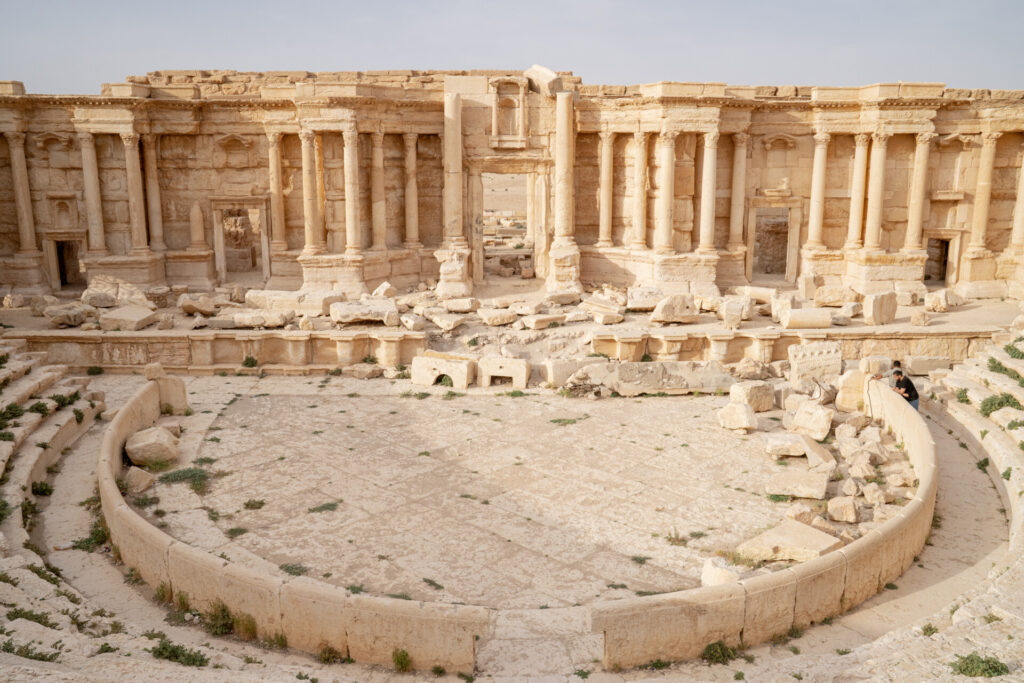
Even the oasis, with its palm trees producing world-renowned dates, has lost its splendor. Today, only decapitated or dried-up tree trunks remain. For 4,000 years, this swath of green nurtured Tadmor, the “City of Palms,” and connected it to the trading routes of the East. Once home to almost 1,000 acres of date palms, olive groves and orchards, the oasis is now a graveyard of stumps.
Amer Shalil walks barefoot across the brittle soil of his family’s land. He is a farmer by birth and by defiance, and both the desert and sun have carved deep lines into his skin. “They burned my trees,” he says flatly, recalling the moment he returned to his field in 2017 after regime forces reclaimed the city from the Islamic State. “They wouldn’t even let me enter. I could only stand there and watch.” His voice doesn’t rise. After more than a decade of war, and so much suffering, emotion feels like a luxury.
During the civil war, the Assad regime and its allies razed the living city. They chopped down trees for firewood and sold it for a handful of Syrian pounds. Some of the trees were over 200 years old.
“After that, the land needed maintenance but the regime only allowed us to go there for three hours a day,” the farmer says. “At least [the Islamic State] only destroyed the ruins,” he adds. “The regime destroyed everything else.”
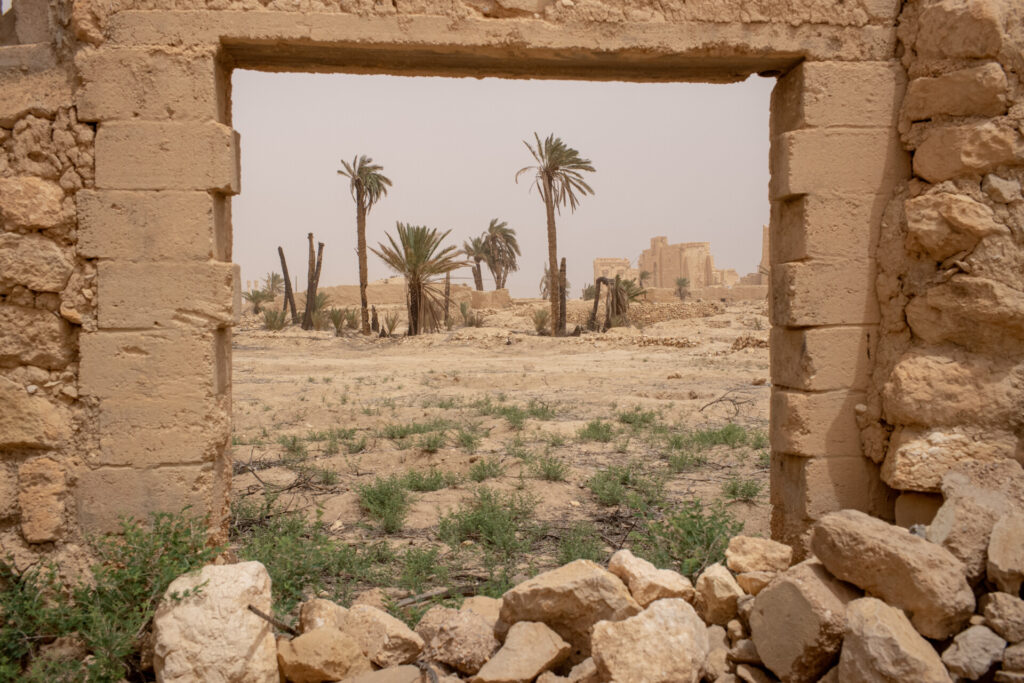
The ancient city was first mentioned in the second millennium BCE. Thanks to its strategic position in the heart of the desert, it became the capital of an Arab client state of the Roman Empire. In the third century CE, under Queen Zenobia’s leadership, it briefly rebelled and declared its own kingdom. It is a millennia-old legacy that the Islamic State deemed heretical — and sought to obliterate with explosives. In July 2015, funerary busts were smashed in public squares. The following month, the monumental temples of Bel and Baalshamin were leveled with explosives.
By October 2015, the triumphal Arch of Septimius Severus and around 10 funerary towers had been destroyed. The city’s archaeological museum was also ravaged by jihadists, who beheaded its chief curator. Within weeks, the Islamic State had also imposed a lifestyle rooted in its interpretation of fundamentalist values, punishing anyone who refused to comply.
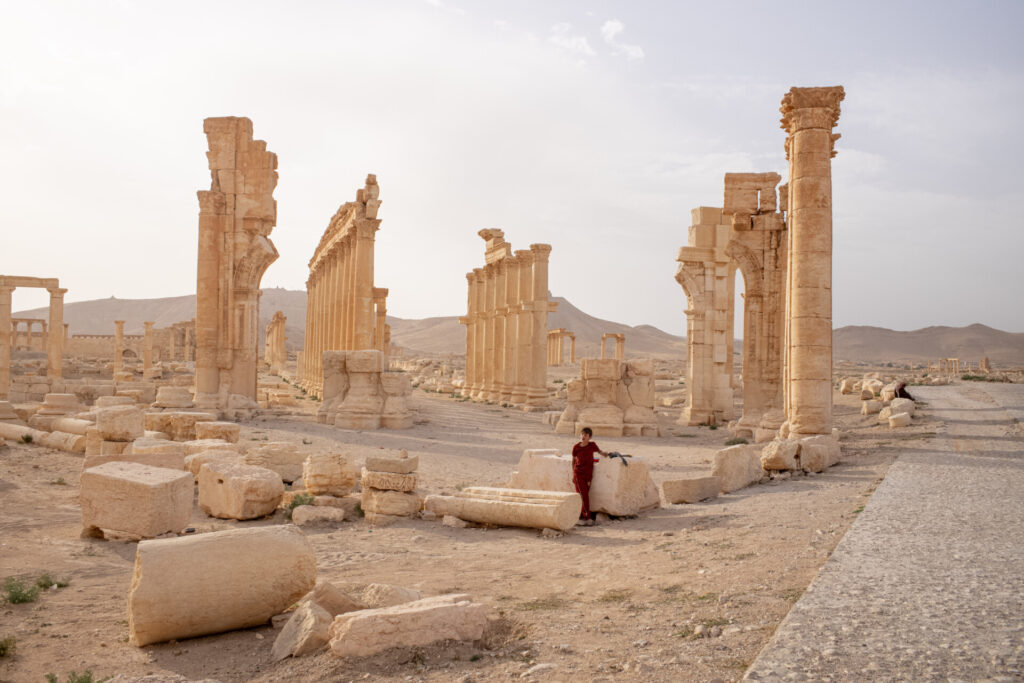
When Assad regime forces retook control of Palmyra in 2017, they moved quickly to prevent residents from reclaiming the area. Due to its location, Palmyra became a strategic asset for the regime and its Russian and Iranian allies. The city lies on the only road connecting Damascus to Deir ez-Zor and, beyond that, Iraq and Iran. Situated at the edge of the desert, it allows control over a vast area in central Syria. For these reasons, the regime and its allies established military bases in the city. At the same time, they launched efforts to discourage residents from returning.
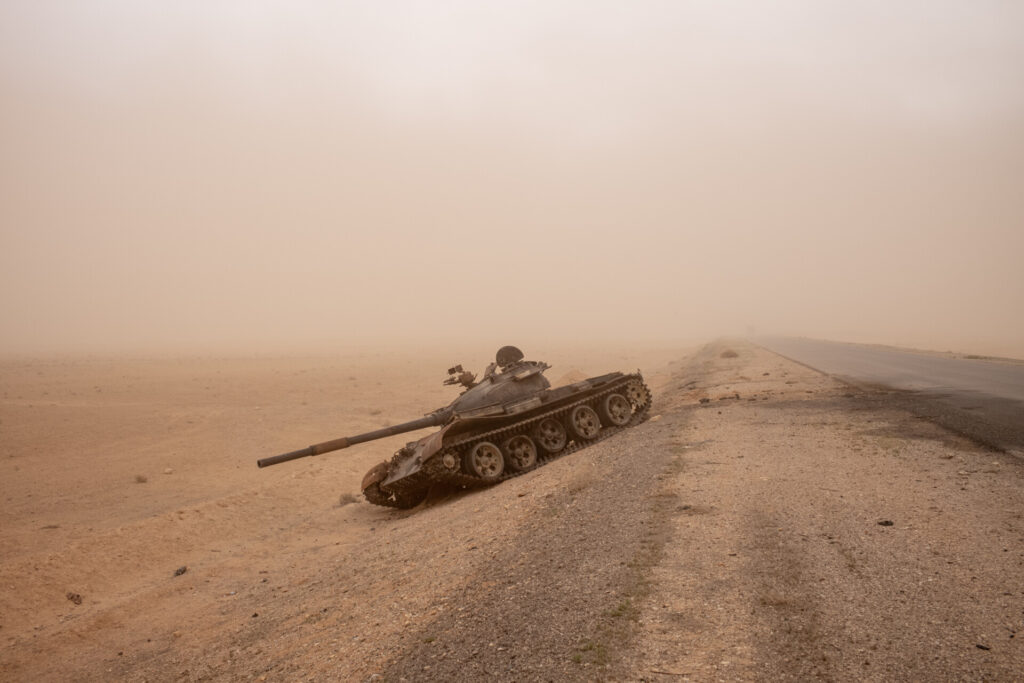
Since 2017, Shalil has managed to replant some trees on his land. The lack of water, however, is a pressing problem. The city enjoys a unique geographical location, at the meeting point of two sources of fresh water. But most of the irrigation infrastructure was stolen by the former regime or left to rot. The city now relies solely on the Afqa spring and its translucent waters. Even this lifeline is rationed on a schedule among the remaining farmers. Exploiting the groundwater is also made impossible by the lack of electricity, which flows only for a few hours each day. Solar panels, too expensive for most, are beyond reach.

The engraved sign reading “Palmyra Green Oasis” at the entrance to the oasis is now a cruel joke. These water problems are exacerbating a more general lack of water caused by global warming, which is particularly affecting Palmyra, with 2025 being Syria’s driest year in half a century. There has been no meaningful rain for three months, Shalil says. Beneath the arid winds, the cracked earth offers no hope. Yet some, like the agricultural engineer Ahmad Taha, still speak of revival.
“If God wills, and we get water, the oasis can live again,” he says, sweeping away dead fronds from a path with almost ritualistic precision. “If we start now, the palms will bear fruit in seven years, God willing.” Taha is not on any official payroll. He was the oasis’s chief agronomist before the war but has neither been reinstated nor replaced. “I volunteer,” he says ironically. He does it out of loyalty, out of hope or perhaps just out of habit.
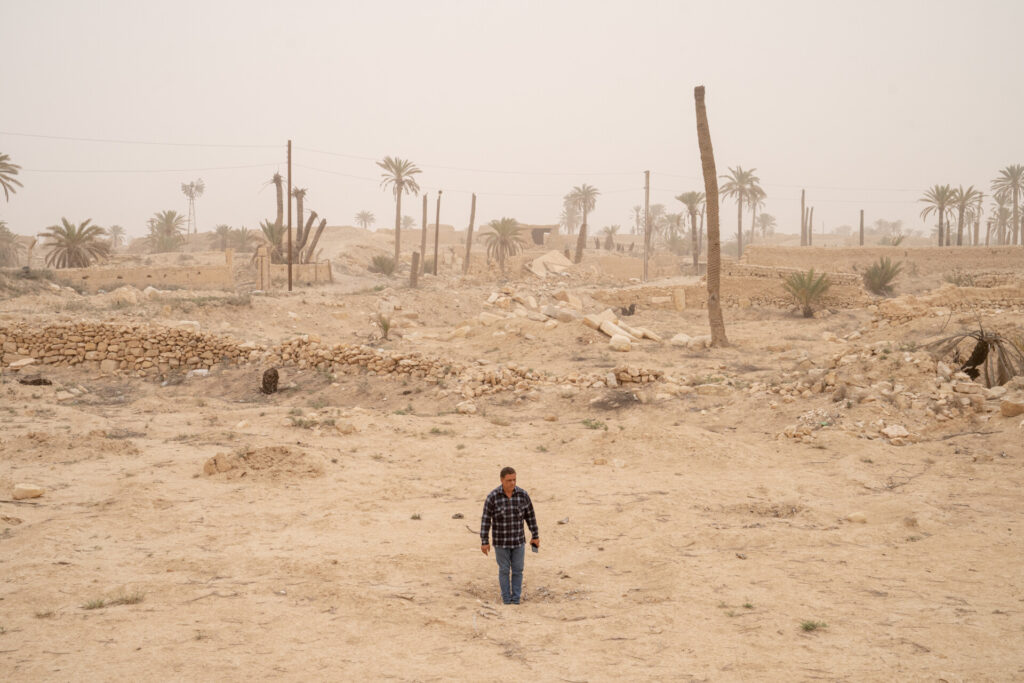
The Palmyrene has in mind the economic stakes that these trees represent. Palmyra’s oasis once generated $800,000 annually, a lifeline for a city where half the population depended on agriculture. Today, that figure hovers near $10,000. “The economy of Palmyra depends entirely on two things: the oasis and tourism,” he explains. “And you can’t have one without the other.”
The revival of tourism — and, with it, reconstruction — hinges on whether the oasis can be brought back to life. For this to happen, it is necessary for the inhabitants to return. Some 40,000 residents fled because of the war, mostly following the arrival of the Islamic State. So far, just 800 families have returned.
In an article published in May 2024 in the Bulletin of the American Society of Overseas Research, archaeologists emphasized the importance of the Palmyrenes’ return. “Their contribution will be necessary to rebuild infrastructure and services, and they will play a fundamental role in revitalizing the Palmyra oasis, particularly by maintaining the water system and the palm and olive trees that have always given life to the settlement,” they wrote. But most need proof that they can feed their children before they risk coming home.
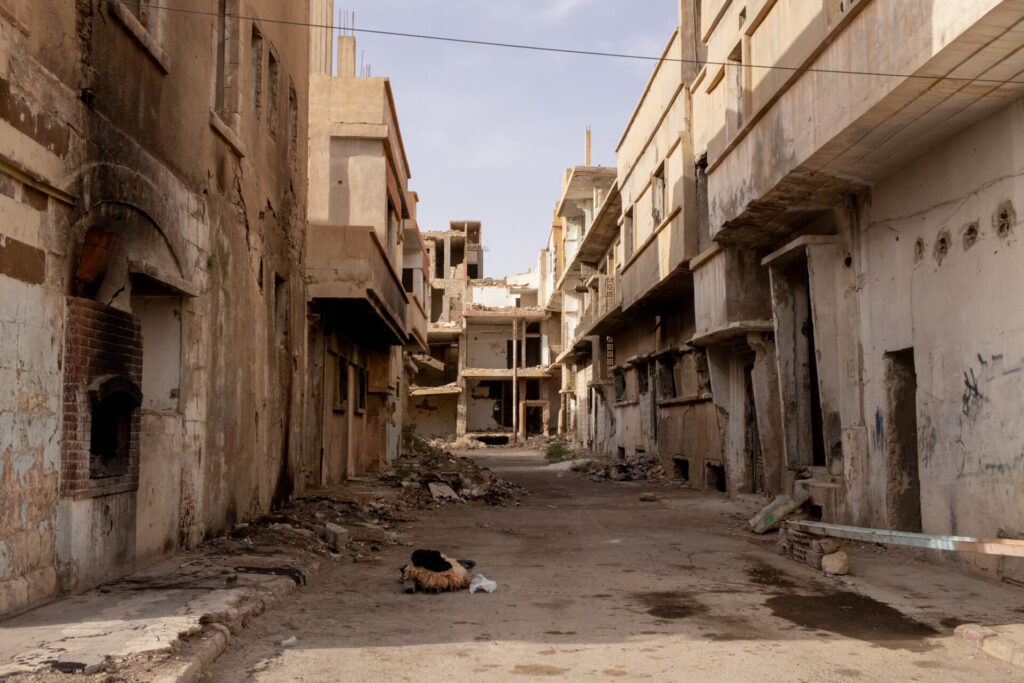
Ahmad Mahmoud Hassan is one of them. Five months ago, he came back to find his 3.7-acre plot burned to the ground. “We’re trying to start over,” he says, standing outside his house, which has no electricity. He greets one of his neighbors who passes by with a toothless smile. “But without money or water, how?”
He adjusts his red keffiyeh and does the math. It would take $10,000 to replant his orchard. Before the war, he earned $8,000 a year from his trees. Now, his 22-year-old son Mohammad is in the army. “I didn’t want to join,” Mohammad says, bouncing his toddler brother on his knee. “I wanted to study medicine, but I don’t have any choice, I have to provide an income for my family and that’s the only way to make money here.”
For life to return to Palmyra, residents are demanding support from the new authorities. For now, most aid is theoretical. A representative from the Homs governorate visited recently, but the government has not yet promised or provided any aid to the residents or municipality of Palmyra for reconstruction. “There’s no money,” Taha says. “But maybe. Little by little”.
In the meantime, life creeps back in, slowly. A few foreign tourists have visited. Two campgrounds have reopened and are ready for the summer season. At the entrance to the ancient site, a jewelry seller waits patiently, eyeing every footstep with anticipation. One German traveler ambles alone through the ruins, transfixed by the silence. He seems absorbed by the immortal beauty of the ancient city.
“You see,” the vendor whispers with a grin, laying out necklaces made from camel bone. “The war is over, they are back.”
But in Palmyra, war doesn’t end with the last shot fired. It lingers — in the dry earth, in the charred trees, in the stories told in hushed voices under a sun that offers no mercy.
“Spotlight” is a newsletter about underreported cultural trends and news from around the world, emailed to subscribers twice a week. Sign up here.



